Chocolate Barks, Mendiants … and Tree Barks?
Chocolate barks or mendiants may not be the first thing that comes to mind on your Christmas treats list. With the holidays right around the corner, many of us are gearing up to celebrate winter festivities with our loved ones. After a long day of fun, what better way to treat yourself than with a bark? It’s the perfect mix of sweetness and crunchiness that will surely become a favourite! And why not look into its traditional beginnings, and the important role tree bark plays in a tree’s (and yours) survival? With so much to explore on this festive confection, keep on reading!
What Exactly Is a Chocolate Bark?
It’s essentially a sophisticated version of a chocolate bar. Instead of the traditional chunky bar, these treats are made out of a thin layer of chocolate and are mixed in with a variety of toppings, such as nuts, pretzels, dried fruit, cookies and peppermint. They’re broken into bite-sized pieces and closely resemble a tree bark (hence the name!). They have rough edges and don’t hold a unified shape. With so many options available, there is a chocolate bark suited to anyone’s preference. There can even be barks mixed in with caramel, though be careful with your teeth!
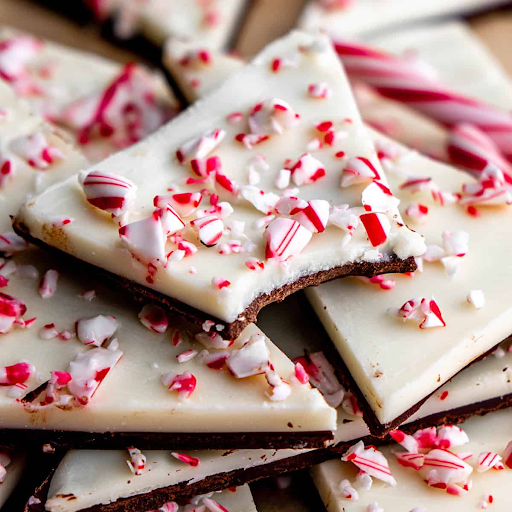
Peppermint Bark (Joy Food Sunshine)
Tasty and Fun Barks to Enjoy
Chocolate Peppermint Bark
When thinking of the holidays, peppermint is the official candy flavour of Christmas. From peppermint candy to even hot chocolate, there’s no doubt this unconventional flavour took over the bark treats. Peppermint extract is added to white chocolate, creating the famous peppermint bark. To intensify the holiday flavour, broken peppermint pieces are lightly or generously poured on top of the bark. These can be great to serve at holiday parties or can even be a tasty treat to leave for Santa Claus to enjoy.
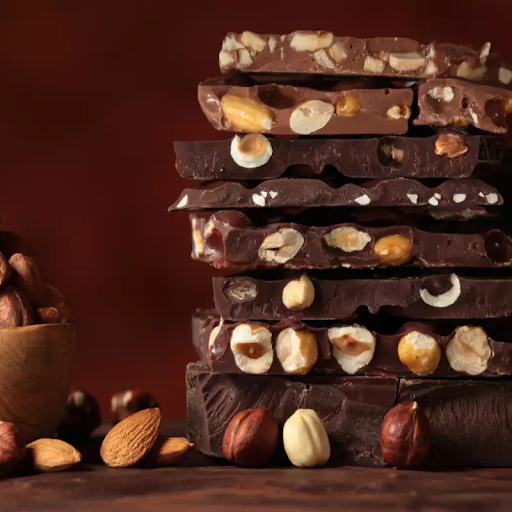
Dark chocolate bark with an assortment of nuts (Times of India)
Chocolate Nut Bark
Chocolate nut barks are usually great when you’re hiking a mountain or walking a beautiful trail. The mixture of healthy nuts, and the sweetness from the chocolate, offers a great combination to keep you afloat during your brisk hike. Nutrient-dense nuts like almonds are ideal for preserving and boosting your stamina. Not to mention, dark chocolate has high fat and low water content, making it a classic snack for backpacking enjoyers.
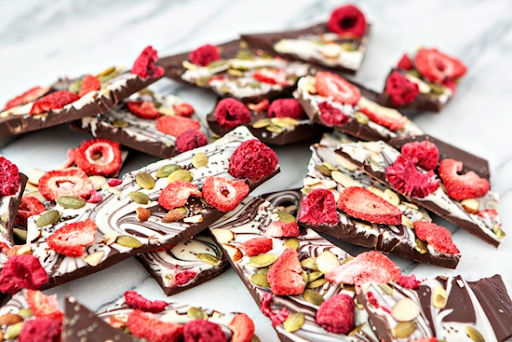
Chocolate bark with dried strawberries and seeds (Good Life Eats)
Chocolate Fruit Bark
Also a great option for those who need nutrient-dense snacks, chocolate fruit barks are the way to go. Some of them may be mixed with nuts or dried fruits. Either way, this snack is packed with flavours. The most popular choice of fruits is dried berries, like cranberries, blueberries, strawberries and raspberries. There are also fun flavours like figs, oranges and pomegranate seeds. Each fruit offers diverse and mouth-watering flavours to keep your energy up during the day.
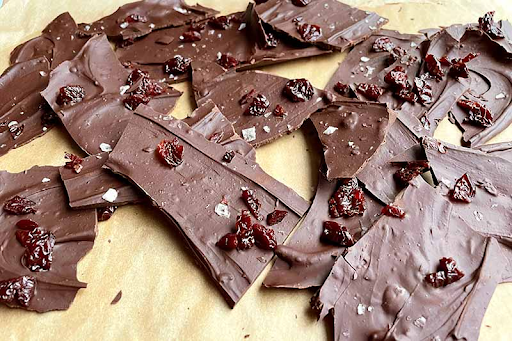
Chocolate bark with bits of chilli pepper (Foodal)
Spicy Chocolate Bark
This type of chocolate bark isn’t as popular as the other ones, but don’t underestimate its flavour profile! Packed with spices like cinnamon and chilli pepper, this treat is surely the most unconventional of the bunch. Spicy and sweet? Yes, please! Dark chocolate is the preferred option to pair with these hot flavours. They range from mild to boasting a Scoville Heat Unit rating of nine million! We wouldn’t recommend that, but if you’re feeling adventurous, make sure you proceed with caution.
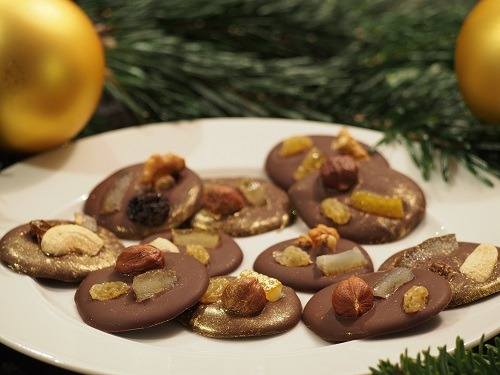
Mendiant with fruits and nuts (My Parisian Kitchen)
From Mendiants to Chocolate Barks
If you’re a French foodie, you probably thought of mendiant when learning about chocolate barks. Mendiant is a traditional French confectionery made out of a thin layer of chocolate and is similarly topped with mixed nuts and dried fruits. It is shaped like a small disk, and the toppings are meant to symbolize the four mendicants (monks in religious orders who adopted poverty as their lifestyle for the purpose of preaching and ministry).
Mendiants are mainly consumed during Christmas due to the Provence tradition in France. It consists of ending a celebratory dinner with the 13 Desserts of Christmas. This is an assortment of thirteen desserts representing Jesus and his twelve disciples. These include nougat, olive oil bread, nuts, and fruits. The colours of the toppings on the mendiant represent each monastic order: dried fig for the Franciscans (Friars Minor), almonds for the Dominicans (Friars Preacher, or Black Friars), raisins for the Augustinian (Austin Friars), and hazelnut for the Carmelites (the White Friars).
Now, how do we go from mendiant to chocolate bark? It’s simple, really; they’re basically the same thing! Instead of the traditional disk shape and adding distinct symbolic toppings, barks offer a more casual treat that is equally crunchy and sweet.
Chocolate Bark vs. Almond Bark
Some people may confuse chocolate bark with compound chocolate, like almond bark, candy melts and melting wafers. Instead of real cocoa butter, these usually contain vegetable or palm kernel oil. This process alleviates the need for the chocolate to be tempered (heating and cooling chocolate) and makes it easier and much more economical for the compound chocolate. This results from the cost of cocoa butter and the special expertise that a traditional chocolate bark must be chilled to create that hardened smooth surface (the crunchier, the better!). Of course, chocolate bark is much healthier than almond bark.
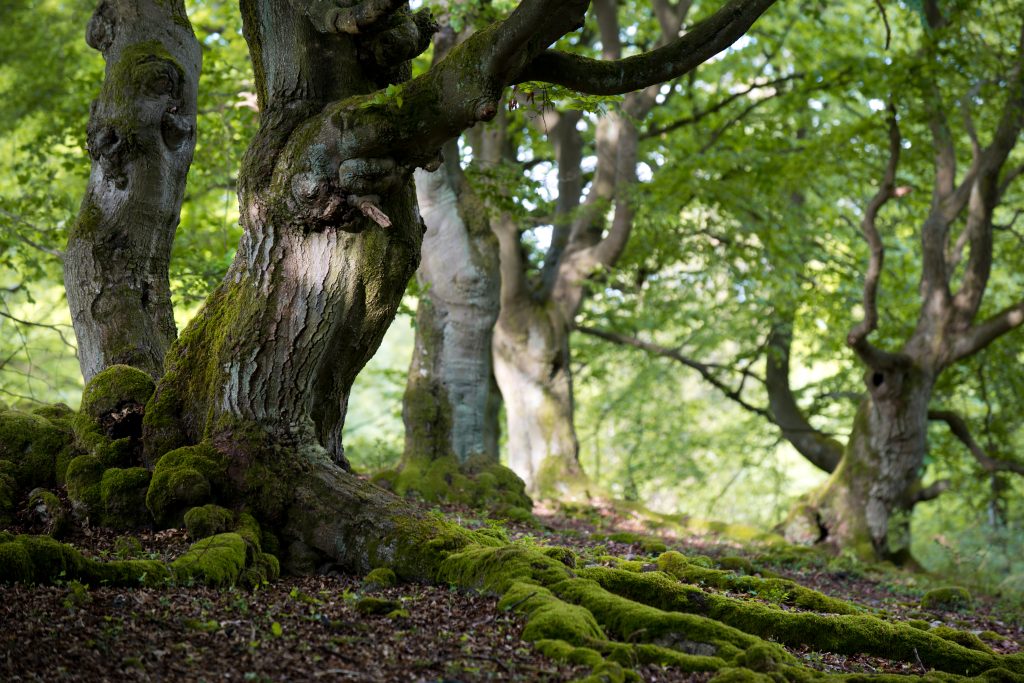
The Importance of Trees for Us
As we discuss barks, it is time to recognize our dear friends, the trees, and why they are important to our well-being.
- Trees help in creating a livable and healthy environment. They act as a physical filter for absorbing toxic pollutants and particles of dust in the air. A singular tree traps up to 1.7 kilograms of dust and pollutants every year. Now imagine it on an exponential scale; it’s truly unique! Not to mention, they take in hefty amounts of carbon dioxide and store the chemicals in their wood, decreasing the rate of global warming. Also, they prevent the possibility of soil erosion and flooding by soaking up litres of stormwater.
- Trees provide habitats for wildlife. They can host a multitude of wildlife, such as birds, insects, fungi and small animals (squirrels, beavers). They provide an ideal habitat for these communities since they offer great shelter and food. By allowing these species to grow and live comfortably, they increase growth diversity within their environment and allow other plants to grow to contribute back to the life cycle.
- Trees stimulate the economy. No one can resist beautiful green surroundings, especially hiking trails and campgrounds. These mountain destinations attract tourists and, in return, help stimulate the local economy. Additionally, people are more likely to purchase homes and invest in real estate when surrounded by nature. Research suggests that the average house price is 5-18% higher when they are encircled by mature trees. Companies can also benefit from investing in greener offices since it is an effective method to increase employee happiness.
The Role of a Tree Bark
The tree’s outer bark’s primary role is to protect the tree from bad weather, external bacteria, bad fungi and pests. In addition to its shielding properties, this layer can maintain suitable moisture levels regardless of the weather (wet and dry seasons). For trees located in colder environments, the outer bark also provides insulation during winter. Thus, it is important to recognize the bark’s function in sustaining the forest ecosystem. Much like human skin, tree bark serves to protect the tree from infectious bacteria and maintain its natural moisture.
Common Uses of Tree Barks
Did you know that there are actually real-life uses of tree bark? They’re particularly practical for survival if you are in a sticky situation during your camping trip or hikes.
- You can use tree barks to create cordage (rope): All you have to do is cut off the cracked outer bark layer of certain trees, then peel the inner bark into long strips. With the strips you’ve accumulated, you can twist them together to create sturdier cordage. Be careful how much you strip away since cutting more than one-fourth of the bark will affect the tree’s longevity.
- If you’ve run out of food options, tree barks can be consumed: Most tree barks are edible, but it is recommended to opt for barks from pines and birches. Their inner barks are full of nutrients, making them an excellent emergency food supply. Additionally, the seeds within the thick layer of the outer bark of pine trees are also edible. So, if you’re ever in a pinch for food, just take a look around you!
- You can use tree bark to create fire: The most important thing is to start a campfire before the sun sets. Say you’ve run out of materials or just simply forgot them. Luckily, tree barks are great for starting a fire. Take any outer bark from trees, and you can even use the dead ones lying on the ground. They’re easily flammable due to their resin properties. Enjoy your warm campfire!
From mendiants to chocolate barks and learning about the important role tree barks play in our well-being, we hope you appreciate these festive treats a little extra this holiday season. There’s a bark fit for every taste bud, so why not share the holiday spirit with those special ones? If you’re looking for chocolate barks near you, make sure to use Dessert Advisor’s search tool to find those tasty mendiants treats! Enjoy the holidays!




